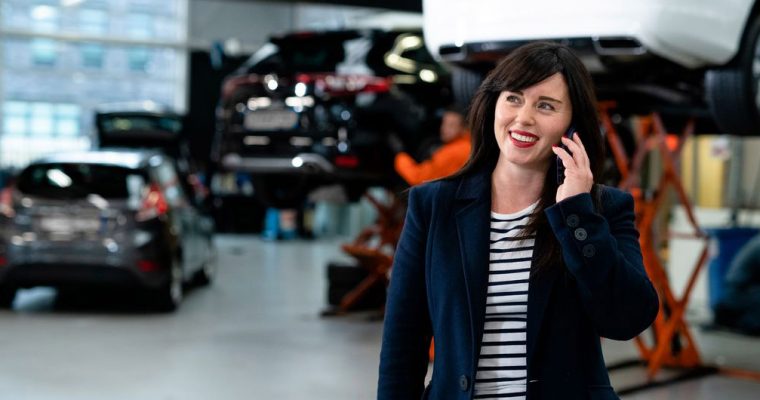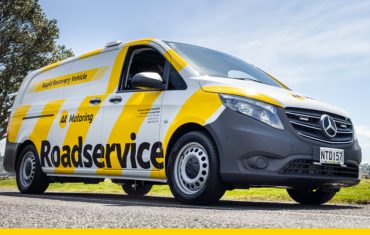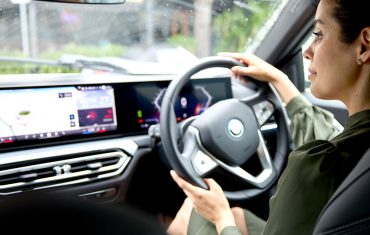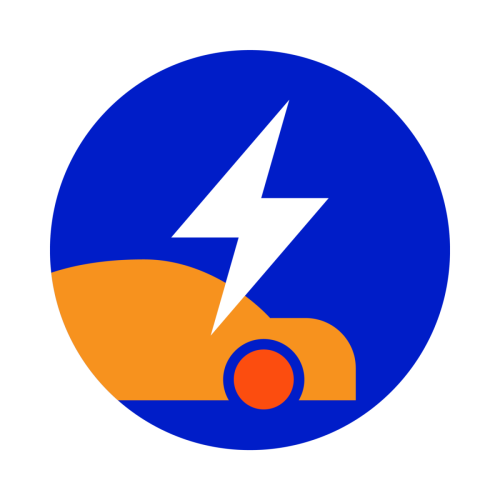
Are your employees driving the safest vehicles?
For your businessWhen your staff members are using a vehicle for work purposes, it’s effectively their office, which means it’s vital that the vehicle is fit-for-purpose, well-maintained and, most importantly, safe. When it comes to updating an employee’s car, van, ute or truck, you should look beyond the dollars-and-cents cost of putting the vehicle on the road and pay attention to its independent safety rating.
I see a lot of clients so focused on cost that they’re driving the vehicles they own into the ground
“I see a lot of clients so focused on cost that they’re driving the vehicles they own into the ground,” explains Chris Park, Manager of Strategic Fleet Consulting for Australia and New Zealand at SG Fleet. “They want to maximise the value of a depreciating asset but, as vehicles age, they need more maintenance, and then the vehicles are also off the road a lot more.”
Driving older vehicles can increase the risk of breakdowns and wear and tear – and potentially higher costs to keep the cars running and on the road. Plus, the older the vehicle is, the further behind today’s safety standards it may be.
“If [you’re] in an old vehicle, and the safety technology isn’t there, there’s a reputational risk around old fleets. There’s a very significant risk if they’re poorly maintained. Under ownership or leasing, regular fleet replacement is critical to make sure those risks are mitigated,” Chris advises.
It’s important to constantly review and update your vehicle policies and minimum safety standards. While government legislation provides a framework for speed limits, driver fatigue management, load restraints and so on, once you’ve answered some important fit-for-purpose questions, choosing the safest vehicle available is your next hurdle.
The best way to ensure your employees are driving the safest possible vehicle is to look at its NCAP (New Car Assessment Program) and/or ANCAP (Australasian New Car Assessment Program) ratings. Both programs measure how vehicles perform in and, more precisely ‘withstand’, certain types of impact collisions.
Here’s how it works…
NCAP and ANCAP
NCAP
At its most basic, NCAP is the American new car safety assessment benchmarking organisation, while ANCAP is the benchmarking program used in Australia and New Zealand.
Dating back to the late ’70s, NCAP began in the US as an initiative of the National Highway Traffic Safety Administration (NHTSA). NCAP’s brief was to measure the safety performance of vehicles as a way to encourage manufacturers – such as Ford, GM and Chrysler – to build safer cars. Conversely, NCAP ratings were designed to provide buyers with impartial research on the safety of certain makes and models to facilitate the decision-making process when purchasing a new car.
Over the course of the next four decades, the NCAP-style of vehicle safety benchmarking has expanded around the globe. New car assessment programs now exist in the European Union (Euro NCAP), as well as in China, Japan, Latin America and South East Asia.
ANCAP
ANCAP – the Australia and New Zealand new car assessment program – was founded in 1993 and, in 2018, following the end of car manufacturing in Australia, ANCAP adopted Euro NCAP’s protocols and benchmarks.
According to their website, ANCAP safety ratings are published “for a range of new passenger, sports utility and light commercial vehicles entering Australian and New Zealand markets using a rating system of zero to five stars.” These ratings provide a guide to “the level of safety a vehicle provides for [passengers] and pedestrians in the event of a crash, as well as its ability – through technology – to avoid or minimise the effects of a crash.”
There’s an exhaustive process ANCAP uses to apply its ratings to vehicles. The areas of testing include physical crash tests, adult and child occupant protection, vulnerable road user protection and safety assist.
Most drivers and road users would be familiar with the concept of crash tests. As part of assessments, ANCAP simulates front-on (head-on crashes and what ANCAP refers to as “frontal off-set” impacts) and side impact collisions, a vehicle running off a road (including what’s called an “oblique pole” test for when a vehicle hits a light pole or a tree) and pedestrian collision impacts. In each of these tests, the effects of the collisions on adult and child passengers in the car are also measured.
The tests simulate collisions between 50km/h and 65 km/h, and measure the damage done to the vehicle itself, as well as collect data through the use of crash test dummies on the likely impact to passengers involved in these kinds of incidents.
With the rapid development of driver technology, ANCAP (and Euro NCAP) carry out performance tests of what they define as “active safety systems”. By simulating real-world situations, ANCAP measures the effectiveness and reliability of Autonomous Emergency Braking (AEB) and Lane Support Systems (LSS), which includes a suite of systems such as lane departure, lane keeping/lane centring) and Speed Assistance Systems (SAS).
Although representatives of vehicle manufacturers are encouraged to liaise with ANCAP when it comes to the set-up of the tests, they’re strictly forbidden from making changes to any feature that might influence the outcome of the tests, like the positioning of the dummies or the lab set-up and so forth.
After an exhaustive battery of tests, researchers at ANCAP can then study the data and apply a safety rating in the form of stars to a vehicle, which are internationally recognised and available for the public to access so to aid in the choice of new car.
When referencing ANCAP ratings, bear in mind the ratings are time specific and safety requirements are increasing each year. That means a 5-star car in 2015 will not have the required safety technology to attain a 5-star rating in 2022.
There will always be risks on the road and, from a probability perspective, the more time we spend on the roads, the more likely we will be involved in an incident or serious accident.
Regularly updating your organisation’s vehicle policies and minimum safety requirements, by drawing on the information made available by organisations like ANCAP, the safer your people will be on the road. That means, the safer they are in their ‘office’.
Get safety advice for your business, start a conversation with SG Fleet/LeasePlan today
 Driving Insights
Driving Insights




